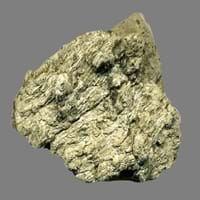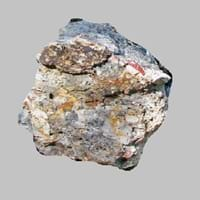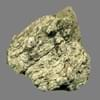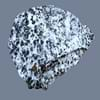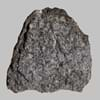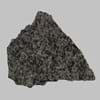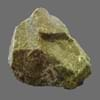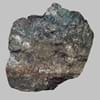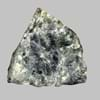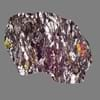Definition
Dacite is a volcanic igneous rock which is rintermediate in composition between andesite and rhyolite
Novaculite is a dense, hard, fine-grained, siliceous metamorpic rock which is a type of chert that breaks with conchoidal fracture
Origin
Romania and Moldova, Europe
Unknown
Discoverer
Unknown
Unknown
Etymology
From Dacia, a province of the Roman Empire which lay between the Danube River and Carpathian Mountains where the rock was first described
From Latin word novacula, for razor stone
Class
Igneous Rocks
Sedimentary Rocks
Sub-Class
Durable Rock, Soft Rock
Durable Rock, Hard Rock
Group
Volcanic
Not Applicable
Other Categories
Fine Grained Rock, Medium Grained Rock, Opaque Rock
Fine Grained Rock, Opaque Rock
Texture
Aphanitic to Porphyritic
Banded, Glassy, Rough, Vitreous
Color
Bluish - Grey, Brown, Grey, Light to Dark Grey
Black, Brown, Green, Grey, Red, White
Durability
Durable
Durable
Appearance
Vesicular
Glassy or Pearly
Interior Uses
Decorative Aggregates, Entryways, Interior Decoration
Countertops, Decorative Aggregates, Flooring, Interior Decoration
Exterior Uses
As Building Stone, Paving Stone, Garden Decoration
As Building Stone, Garden Decoration
Other Architectural Uses
Curbing
Curbing
Construction Industry
As Dimension Stone, Construction Aggregate, for Road Aggregate, Landscaping
Arrowheads, Building houses or walls, Cement Manufacture, Construction Aggregate, Cutting Tool, for Road Aggregate, Knives, Landscaping, Making natural cement, Production of Glass and Ceramics, Rail Track Ballast, Roadstone, Spear Points, Used to sharpen metal tools and weapons
Medical Industry
Not Yet Used
Not Yet Used
Antiquity Uses
Artifacts
Artifacts, Monuments
Commercial Uses
Commemorative Tablets, Creating Artwork
Cemetery Markers, Gemstone, In aquifers, In fire-starting tools, Jewelry, Manufacture of tools, Pebbles are used in ball mills to grind in ceramics industry, To determine the gold content of jewelry
Types
Footwall Dacite, Hanging wall Dacite, Tuff and Biotite Dacite
Not Available
Features
Host Rock for Lead, Is one of the oldest rock
Clasts are smooth to touch, Easily splits into thin plates, Has High structural resistance against erosion and climate
Archaeological Significance
Monuments
Not Yet Used
Used
Famous Monuments
Not Applicable
Data Not Available
Sculpture
Not Yet Used
Not Yet Used
Famous Sculptures
Not Applicable
Not Applicable
Pictographs
Used
Not Used
Petroglyphs
Used
Not Used
Figurines
Not Yet Used
Not Yet Used
Formation
Dacitic magma is formed by the subduction of young oceanic crust under a thick felsic continental plate. Further, the Oceanic crust is hydrothermally altered as quartz and sodium are added.
Novaculite forms when microcrystals of silicon dioxide grow within soft sediments that become limestone or chalk. The formation of Novaculite can be either of chemical or biological origin.
Mineral Content
Amphibole, Apatite, Biotite, Feldspar, Garnet, Hornblade, Magnetite, Plagioclase, Pyroxene, Quartz, Zircon
Quartz, Silicon
Compound Content
Ca, Fe, Potassium Oxide, Mg, Potassium, Silicon Dioxide
Ca, Silicon Dioxide
Types of Metamorphism
Burial Metamorphism, Cataclastic Metamorphism
Not Applicable
Types of Weathering
Biological Weathering, Chemical Weathering, Mechanical Weathering
Not Applicable
Types of Erosion
Chemical Erosion
Chemical Erosion, Coastal Erosion, Glacier Erosion
Grain Size
Medium to Fine Coarse Grained
Fine Grained
Fracture
Conchoidal
Conchoidal
Porosity
Less Porous
Less Porous
Luster
Subvitreous to Dull
Waxy and Dull
Compressive Strength
Not Available
Cleavage
Perfect
Non-Existent
Toughness
Not Available
1.5
Specific Gravity
2.86-2.87
2.5-2.7
Transparency
Translucent
Translucent to Opaque
Density
2.77-2.771 g/cm3
2.7 g/cm3
Resistance
Heat Resistant, Impact Resistant, Pressure Resistant, Wear Resistant
Heat Resistant, Impact Resistant, Pressure Resistant, Wear Resistant
Deposits in Eastern Continents
Asia
Not Yet Found
China, India, Iran, Japan, Oman, Russia, Saudi Arabia, Taiwan, Thailand, Vietnam
Africa
Not Yet Found
Kenya, Morocco, South Africa, Tanzania
Europe
France, Greece, Romania, Scotland, Spain
Austria, France, Greece, Italy, Malta, Poland, Portugal, Serbia, Spain, Sweden, United Kingdom
Others
Not Yet Found
Greenland, Mid-Atlantic Ridge
Deposits in Western Continents
North America
USA
Canada, Mexico, USA
South America
Argentina, Bolivia, Chile, Colombia, Ecuador, Peru, Venezuela
Bolivia, Brazil
Deposits in Oceania Continent
Australia
New Zealand, South Australia, Western Australia
New South Wales, Queensland, South Australia, Western Australia
All about Dacite and Novaculite Properties
Know all about Dacite and Novaculite properties here. All properties of rocks are important as they define the type of rock and its application. Dacite belongs to Igneous Rocks while Novaculite belongs to Sedimentary Rocks.Texture of Dacite is Aphanitic to Porphyritic whereas that of Novaculite is Banded, Glassy, Rough, Vitreous. Dacite appears Vesicular and Novaculite appears Glassy or Pearly. The luster of Dacite is subvitreous to dull while that of Novaculite is waxy and dull. Dacite is available in bluish - grey, brown, grey, light to dark grey colors whereas Novaculite is available in black, brown, green, grey, red, white colors. The commercial uses of Dacite are commemorative tablets, creating artwork and that of Novaculite are cemetery markers, gemstone, in aquifers, in fire-starting tools, jewelry, manufacture of tools, pebbles are used in ball mills to grind in ceramics industry, to determine the gold content of jewelry.
